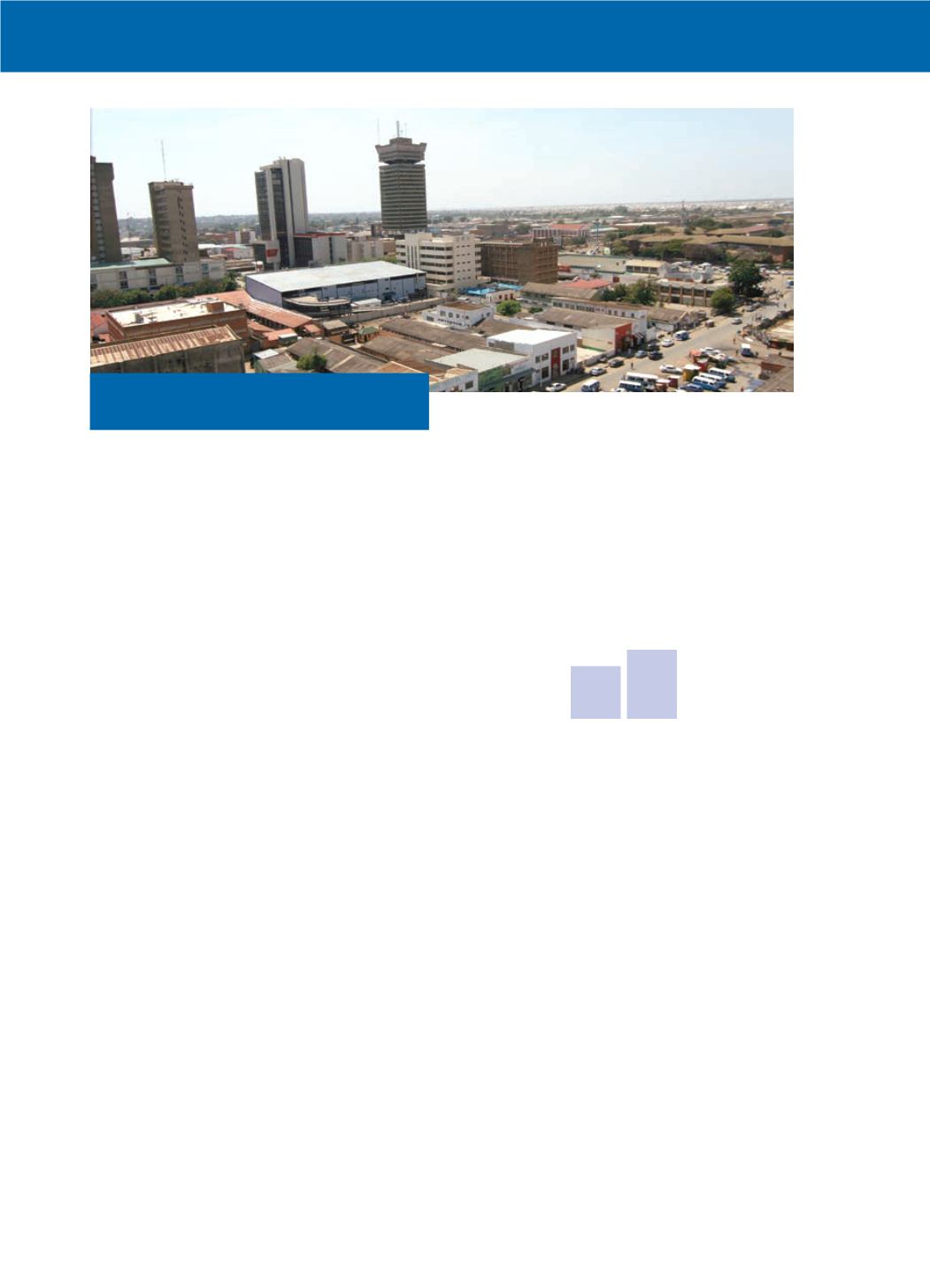
84
Finance
cial condition of the banking sector (including non-
bank financial institutions) in Zambia managed to
overcome the struggles and find success. All banks
remained adequately capitalized and operational.
As of 2013, the government of Zambia had exceed-
ed its national target of 50 percent financial inclu-
sion, and in 2015, 59 percent of adults were finan-
cially included.
INVESTMENT OPPORTUNITIES
The development of Multi-Facility Economic Zones
and Industrial Parks have contributed to a notable
influx of general investment in the country, which has
greatly benefited the country’s financial sector.
BANKING SYSTEM
The financial sector in Zambia is made up of banks
and non-bank financial institutions (NBFIs), which
are regulated and supervised by three agencies: the
Bank of Zambia (BoZ), the Pensions and Insurance
Authority (PIA), and the Securities and Exchange
Commission (SEC).
According to 2012 BOZ (Bank of Zambia) figures,
there are 19 commercial banks in Zambia, which
OVERVIEW
Zambia’s long period of political stability has undeni-
ably helped it reach lower middle-income status in
the last decade. Recently two Euro bonds were is-
sued, which serves as evidence of the confidence
investors are now placing in the country.
Rapid economic growth in the country has been ex-
perienced for more than a decade, and this can be
attributed to a number of measures undertaken by
the government. Prudent macroeconomic manage-
ment, market liberalization policies, and increases
in copper prices have helped drive investments
into the country, which have led to an average an-
nual growth of about 6.4% over the last decade. The
economy is mostly dependent on copper; however,
the agriculture sector is a major employer (70% of
the population).
The country’s Vision 2030 and the Sixth National
Development Plan have been recently revised, and
they are poised to create great improvements across
the financial sector. The development plan has been
organized to provide for “broad based wealth and
job creation through citizenry participation and tech-
nological advancement.” One of the primary goals
most affecting the finance sector is that of fostering a
competitive and outward-oriented economy.
Monetary
& Financial
Dev
el
opments
In 2005 and 2006, Zambia participated in the Highly
Indebted Poor Country (HIPC) and Multi-Donor Debt
Reduction Initiative (MDRI), which led to a large re-
duction in debt— from 7.2 billion USD to 0.5 billion
USD. This created a fiscal space for development,
which, along with excellent macroeconomic man-
agement and broad sector growth,
Despite the global financial crisis and its adverse im-
pact on banking systems globally, the overall finan-
Credit: The Inzy Company
Lusaka from above
Financial
Incl
usion
2013
50%
2015
59%


